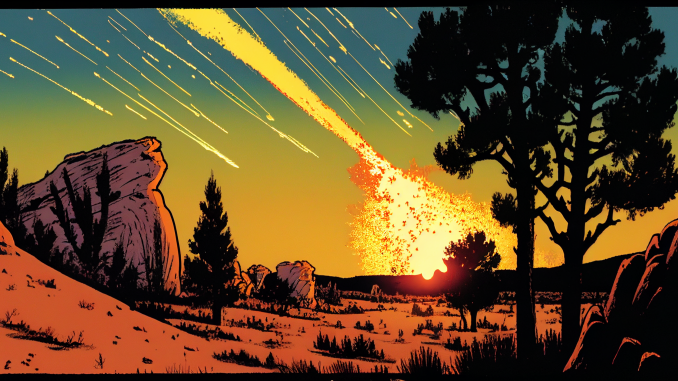
The answer might not be as clear as we’d like it. But in this article, I’m going to give an overview and list the evidence for and against the YDIH as an hypothesis. The strengths and weaknesses of it as an argument.
Introduction
The Younger-Dryas Impact Hypothesis (YDIH) proposes that one or more impacts occurred by a comet or asteroid at around 12,900 years ago which triggered a cooling event known by climate scientists as the Younger-Dryas Stadial. To get a full picture, we need to really take a look at what what happening to climate a few thousand years before that.
At around 14,500 years ago, the climate on Earth shifted from a cold-glacial planet to a warmer period during which glaciers retreated. The Laurentide Ice Sheets that covered much of North America nearly as far south as modern Kentucky, began receding around this time.
Between 12,900 and 11,500 years ago, however, climate swiftly reverted to near-glacial conditions. We see this abrupt shift in climate in various proxy data such as Greenland ice cores and lake sediments in Europe along with paleoclimate data from all over the world. Incidentally, the Younger-Dryas name comes from a flower (Dryas octopetala), that grew in the cold conditions common in Europe during the period.
The scientific consensus for this abrupt shift back to a near-glacial period is the failure of the thermocline circulation of ocean water. Rapidly melting ice sheets added huge amounts of freshwater to the world’s oceans, which had an enormous impact on ocean salinity and density. This, in turn, had a detrimental effect on the thermohaline circulation, which slowed or even temporarily shut down, the movement of warm, equatorial waters to northern latitudes.

So Why Do We Need an Impact?
While the freshwater release trigger is most widely accepted hypothesis (Allaart et al 2023; Naughton et al 2023; Carlson 2013; Lynch-Stieglitz et al 2011; Praetorius et al 2008; McManu et al 2004…) and the general consensus of climate scientists to be the YD trigger event, it is still just an hypothesis among several others.
Other hypotheses for triggering the YD include:
- Atmospheric circulation changes which redistributed heat from the North Atlantic and other parts of the world.
- Vegetation changes that altered cover and albedo, again, changing the way the world interacts with heat. In this case, reflecting it away instead of storing it.
- Volcanic eruptions that released large amounts of particulates like ash, and aerosols into the atmosphere, causing a cooling response.
- A solar flare or coronal mass ejection by the sun could have triggered the megafaunal extinction.
- And, of course, there’s the impact hypothesis, which generally suggests that a comet or asteroid impacted North America, possibly the Laurentide ice sheet itself, causing massive and/or widespread wildfires, all leading to the widespread extinction of megafauna like mastondons, giant ground sloths, bison antiquus, and sabertooth felines.
All of these have their weaknesses as hypotheses. The solar flare hypothesis, for instance, doesn’t explain the inconsistency of extinctions across continents (why some megafauna and not others? Why did megafauna in N. America disappear hundreds of years before S. America? etc.). The volcanic hypothesis doesn’t work mainly because of timing: the volcanic eruptions happen over 200 years before the onset of the YD.
But the most talked about hypothesis isn’t the one that happens to be the scientific consensus. It isn’t the meltwater effect on ocean circulation. It’s the impact hypothesis. And that, in itself, should be some sort of red flag. But for which side?
The Core Claims of the YDIH
There are some core claims that the proponents of the YDIH insist are evidence for its veracity:
- The presence of significant levels of platinum and other impact-related materials in ice cores and sediments from the YD boundary layer.
- The discovery of nanodiamonds, carbon micreospherules, magnetic grains, and other impact markers in sedimentary deposits associated with the YD boundary.
- The identification of soot and charcoal in ice cores that indicate widespread wildfires caused by impact(s).
- Fossil evidence of mass extinctions of megafauna around at time of the impact (mammoths, mastodons, sabertoothed cats, etc.).
- The collapse of several ancient civilizations based on archaeological evidence.
Most of the evidence in favor of an impact that jump started the Younger-Dryas is geological in nature. But in a way that is extremely ephemeral. Nanodiamonds, carbon microspherules, the presence of platinum, iridium, and other supposed extraterrestrial elements, magnetic grains of this and that… These are particles of data that exist on a microscopic scale and many questions have been raised about their authenticity, reproducibility, significance, origins, and so on.
Fortunately, these are all truly scientific questions that have scientific answers. But the nature of their existence lends to the complexity involved in demonstrating their presence, absence, or significance. The proponents for the YDIH suggest a mechanism, experts in these individual subfields refute them, the YDIH proponents refute the refutation, the experts counter… rinse and repeat.
Of recent years, Jorgeson, et al (2019) call into question the “synchronous global deposition of the Younger-Dryas Boundary” as alleged by YDIH proponents, which, of course, calls into question the entire hypothesis. Proponents of the YDIH fired back and, stating that their simulation was flawed. The authors of the simulation counter-responded that the YDIH proponents were “incorrect” and that at least one of their assumptions was “inconsequential.”
Sun, et al (2020) present some of the hardest critiques for many of the markers for a YD impact. They question if supposed markers are even actually markers at all, noting that carbon spherules and elongates are misidentified “fungal sclerotia are common in Northern hemisphere forest litter and soils.” And that “the micrograins interpreted as hexagonal nanodiamonds from YD sites of Murray Springs (AZ) and Arlington Canyon on Santa Rosa Island (CA) are instead assessed as graphene/graphene aggregates.”
More importantly, Sun et al reveal that their own work in Hall’s Cave in Texas showed that the alleged YDI elemental markers were not present in the quantities and ratios necessary to suggest that a comet, meteor, or asteroid impacted the Earth to kick off the Younger-Dryas period. Instead, the proportions of elements were consistent with volcanic gases and suggest volcanic activity at the time of the YD.
Black Mats
One key concept that recurs in papers and discussions of the Younger-Dryas, particularly with regard to the impact hypothesis, is that of “black mat” stratigraphy.
These are carbon-rich strata that probably represent moist, vegetative conditions surrounding the time of deposition. Some seem to have been formed in algae ponds and others may be the result of burned vegetation. They’re not ubiquitous, however, and sites with black mat strata number less than 100. I was able to find record of just under 60 in North America, mostly in the Southwest or Rocky Mountain states.
Because megafauna bones like mammoths aren’t found above black mat strata at these sites, and because Clovis artifacts aren’t found in situ within the black mat strata; and because no post-Clovis artifacts have been found either in situ or below the black mat, many consider this to be a clear YD boundary that shows megafaunal extinction and the end of Clovis.
Megafaunal Extinction
That there was an extinction of megafauna to include mammoths, mastodons, dire wolves, giant sloths, tapirs, American lions, the short-faced bear, musk ox, and others is a fact. The term “megafauna” refers to animals weighing around 100 pounds or more (44 kg to be exact)
In North America, this extinction seems to have occurred, for the most part, around a 400 year window between 13,300 – 12,900 cal BP. Which aligns nicely with the YD impact hypothesis. It appears to be simultaneous across the continent. But the hypothesized bolide impact isn’t the only (alleged) event that correlates with extinction. This is also the period for the arrival and expansion of Clovis hunters who would have made their way through the ice-free corridor that opens up at around 13,000 years ago.
In South America, as many as 58 genera of mammals went extinct at the end of the Pleistocene. A couple of things bear noting: 1) this is more than went extinct in N. America, and 2) they didn’t start to die out until between 12,500-12,000 cal BP, which is 500 years after their North American counterparts.
What about in Europe? Like North and South America, Europe also had extinctions of megafauna during the Pleistocene, but the extinctions weren’t relatable to a single event, rather they occurred during warm, wet events over a period of 30,000 years (Cooper et al, 2015).
One more thing that’s important to note is that isolated populations of mammoths seem to have survived well into the Holocene at Wrangel Island off the north coast of Siberia and St. Paul Island in the Bearing Sea. On these two islands, latest dates were for 3,585 +/- 60 BP and 7,908 +/- 100 BP respectively.
The Demise of Clovis People?
One of the core claims of the YD impact hypothesis listed above is that one or more ancient civilizations collapsed or were otherwise decimated during the alleged impact. The lack of immediate post-Clovis transitional artifacts or evidence of occupation is often cited as evidence for this.
But, as any archaeologist working in North America will tell you, there hardly ever any evidence of transitional occupations at sites where multiple occupations are found. This is particularly true the further back in the material record we look.
Most of the papers that promote an extraterrestrial impact as kicking off the Younger-Dryas are written from the perspective of geology. As well they should be. There are some archaeologists that find favor with the YDIH, but for most “an extraterrestrial impact is an unnecessary solution for an archaeological problem that does not exist” (Holliday and Meltzer 2010).
The suggestion by YDIH proponents that post-Clovis populations were adversely affected by a putative impact doesn’t hold up in the archaeological record. Folsom sites out-number Clovis, which hints at a population increase rather than a decrease. In fact, the ratio of Folsom to Clovis sites is roughly that of Folsom to Clovis points: Just a tad north of 3 to 1.
Indeed, the archaeological evidence at the onset of the YD reflects increased human population to the interior of North and South America, supplanting the existing population that likely made its way into the Americas via a coastal route as evidenced by pre-Clovis sites like White Sands Locality 2 (Raff 2002; Bennett et al 2021). Human expansion at the time of the YD and the end of the Pleistocene was rapid and rather than gradual expansion, the genetic record shows evidence of population splits and rapid “leapfrogging” of populations into the Americas. All during the period of megafaunal extinctions, first in North America then in South America.
The Dark Side of YDIH
There is a dark side. Many of the proponents of an impact hypothesis are non-scientists and pseudoscientists. There are accusations of cherry-picking data, inventing data, hiding data, and using tactics similar to creationism to promote the YDIH. There seems to be a notion among them that quantity of papers and articles increases the veracity of the hypothesis. And this is easy enough to measure since they’ve created a group by name (the Comet Research Group).
Some members of this group, I suspect, are legit researchers that legitimately seek discovery. Many, however, are non-scientists who promote pseudoscience, pseudoarchaeology, and pseudohistory, including the groups leader, George Howard. One of their most significant papers was criticized for inappropriate image manipulation, which the authors eventually admitted to. Other criticisms of this paper have yet to be addressed by the authors, however, such as discrepancies between a claimed blast wave direction and what was apparent in the images as well as lack of supporting data for the paper’s overall conclusions.
Biblical Archaeology
It should be noted that this particular paper had over 500,000 accesses and an Altmetric score of 5,936, a boon for even Nature (or to be more specific, Scientific Reports, which is part of Nature), which is the publisher. While I’m sure they’re keen on not losing the web-traffic an article with over 20,000 tweets can provide, they still put the following note on the main page:

This paper was titled A Tunguska sized airburst destroyed Tall el-Hammam a Middle Bronze Age city in the Jordan Valley near the Dead Sea. And to underscore the possible dubious intent of its authors, one need only look at the archaeological work itself. And a few of the authors. Phil Silvia, listed as the last author, was apparently an archaeologist and field supervisor of the site during several seasons. His PhD supervisor and mentor, Steven Collins, was the director of the effort and the current dean of Trinity Southwest University where Silvia received his own PhD.
Trinity Southwest University is an unaccredited bible college in Albuquerque, New Mexico. The entire campus is snugged in between a nail salon and Sticky Rice Grilled Chicken.
So, back to the Altmetric score of 5,936 (probably over 6,000 by now). This was mainly due to the social media traction the paper received and the accompanied headlines which were much like this:
In the Nature Scientific Reports paper (which the journal is currently investigating), the authors write:
There is an ongoing debate as to whether Tall el-Hammam could be the biblical city of Sodom (Silvia2 and references therein), but this issue is beyond the scope of this investigation.
Tall el-Hammam paper in Nature Scientific Reports (2021)
“Beyond the scope of this investigation,” but the authors manage to seat the idea firmly by mentioning it a few more times in the body of the paper as well as the citations. The citation to the quote above is, of course, Silvia himself. So when we go to his dissertation and read page 172, we find this footnote:
If Tall el-Hammam is actually the ancient city of Sodom, as Collins asserts (Collins and Scott, 2013), then “bad ju-ju” (religious superstition) may also have contributed to the extended occupational hiatus.
Phil Silvia’s PhD Dissertation, p. 172
And when we go to Collins and Scott (2013) we find:
Citing the example of Tunguska, Siberia, Moore describes what happens when a meteoric object consumes itself just above the ground before impact: “Such an airburst creates a huge explosion with considerable damage to the area below and, more importantly, it might leave no debris or evidence of the nature of the event.”
Moore continues: “If it was an airburst, such as the strike at Tunguska, there might be no dramatic physical evidence of the event such as a crater. The findings on the ground, however, might still provide clues. First, the air blast would level all standing objects in the vicinity [the wide-scale leveling of the trees was essentially the only finding at Tunguska]. Such an occurrence over an ancient city would have the effect of blasting all habitation off the top of a tall with the possible exception of the larger foundations and walls. Data consistent with such a scenario appear in the excavation reports of both Tall Nimrin and Tall el-Hammam on the Jordan Disk. The nature of archaeological debris around these sites could suggest such an event. At any rate, an airburst would account for the area becoming a ‘wasteland’ for hundreds of years, as Numbers 21:20 describes.”
Collins & Scott (2013). Discovering the City of Sodom, ch. 13.
One of the earliest papers Collins lists in his CV is from 1999, titled “Is the Bible a True Narrative Representation?” Not surprisingly, he concludes in the affirmative. The paper itself is just so much philosophical circularity familiar in much of the theoretical underpinnings of biblical pseudoarchaeology. One needn’t strain the imagination to see how the Tall el-Hammam paper in Scientific Reports (Nature) is the work of biblical archaeologists working to fit data into an idea they started out with.
The Comic Summit
The active members of the Comet Research Group are a curious batch of folks. There’s a sense of self-aggrandizing behavior in the way they self-promote with appearances on Joe Rogan’s podcast, the publication of books and papers, maintaining a list of “members,” and citing each other in endless circles of alleged discovery. I’ve heard it said that some people on their members list didn’t even know they were members until informed.
And prominent members are either not scientists at all, or they’re biblical archaeologists trained or affiliated with unaccredited institutions. In fact, more than one prominent member has expressed anti-science or science-denialist points of view. Including the group’s director. And, when faced with criticism, they get ugly in social media: body shaming, accusing critics of criminal activity, and so on. And they maintain close associations with personalities that actively promote pseudoscience.
To highlight that association, one need only look at the conference the CRG is promoting this year in Asheville, North Carolina: The Cosmic Summit. For a mere $500 participants can hear talks by pseudoscience personalities like Randall Carson, Scott Wolter, Unchartedx and Jahannah James. This is the group that want’s everyone to take their hypothesis about an impact seriously.
Originally, the lineup included Graham Hancock and BrightInsight. Describing these six personalities and their pseudoscientific perspectives would take up an entirely separate blog post, so I’ll leave you to look them up yourself. Hancock and BrightInsight (real name Jimmy Corsetti) dropped out because they discovered some irregularities with compensations, rights to works, or associations with certain personalities… or something. It’s all pretty comical and gives the appearance of trying to create a scientific conference in the way a Polynesian cargo-cult creates an airfield.
Will the Real Comic Group Please Stand Up?
In just the last few days, the Twitter account @BadScienceNews revealed that the Comet Research Group is an inactive trade name parented by Rising Light Group, Inc., which is listed as an educational, religious, and scientific business type and a domestic nonprofit corporation. Rising Light’s president is Ronald Way, who for the last 30 years “has been talking to biblical scholars, studying the historical Jesus and early Christianity.”
So what does that mean for the CRG? Hell if I know. But it’s almost comical that the CRG director, George Howard, seems oblivious to it all. And the religious connections just keep showing up. Almost as much as the pseudoscience connections.
So is YDIH science or pseudoscience?
I’d say science. Mostly.
Impacts happen. Some of them undoubtedly happened at the end of the Pleistocene. Space.com says we have thousands of impacts each year and still 90-95 percent of all meteors burn up in the sky. All of them seeding the earth with extraterrestrial particles.
My gut-feeling is that there was no impact that had global a repercussion or effect. But I also don’t rule it out. The megafaunal extinctions that occurred in North and South America were quick enough to be called simultaneous on a geologic scale, but on a human scale, they took between 100 – 400 years (some genera went quick, others not so quick).
In my mind, I see no reason not to ascribe over-harvesting by the sudden influx of Clovis hunters to their demise. A brief look at the historic photo below is a reminder of a what a few humans can do to a population of bison. We nearly did the same to the wild turkey. We did do it to the carrier pigeon. Today, many megafaunal species are threatened with extinction primarily due to human hunting.
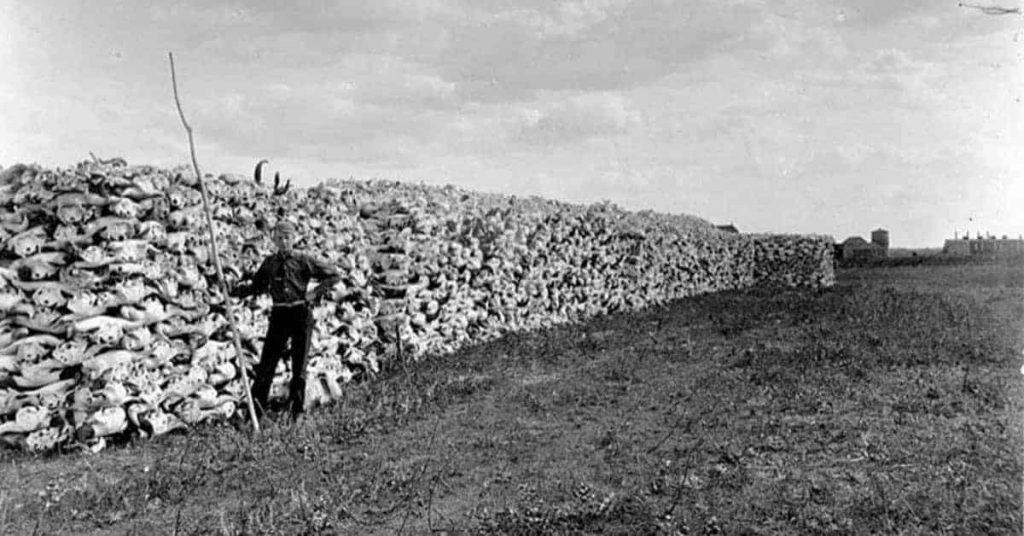
Add to this the consistent growth of human populations in North America where the putative impact was to have occurred, and the solid explanation of the effect freshwater from melting Laurentide glaciers had on the Atlantic Meridional Overturning Circulation (AMOC), and an impact just isn’t needed.
The putative impacts are literally all over the map by the Comet Research Group, which is clearly a pseudoscientific body in spite of the legitimate scientists showing up as authors in papers they promote. It’s clear by the associations they keep, by the biblical circularity they apply to methodologies, and by the tactics they employ dealing with critics. They suppose impacts over the Great Lakes region but also write papers that suggest a Bronze Age village in Jordan is the biblical Sodom and destroyed by an airburst.
For the CRG, the data will continue to be elusive, ephemeral, and esoteric. No craters. No easily discernible and identifiable sites… just nano-diamonds and microspherules from samples you can’t have to verify because “we’ve used them all.”
References, Sources, and Further Reading
Supporting the YDIH
Bunch, T.E., LeCompte, M.A., Adedeji, A.V. et al. A Tunguska sized airburst destroyed Tall el-Hammam a Middle Bronze Age city in the Jordan Valley near the Dead Sea. Science Reports, 11, 18632 (2021). https://doi.org/10.1038/s41598-021-97778-3
Firestone, R.B., Allen West, J.P. Kennett, et al (2007). Evidence for an extraterrestrial impact 12,900 years ago that contributed to the megafaunal extinctions and the Younger Dryas cooling. Proceedings of the National Academy of Sciences, 104(41):16016–16021.
LeCompte, Malcolm A., Albert C. Goodyear, Mark N. Demitroff, Dale Batchelor, Edward K. Vogel, Charles Mooney, Barrett N. Rock, Alfred W. Seidel (2012). Independent evaluation of conflicting microspherule results from different investigations of the Younger Dryas impact hypothesis. Proceedings of the National Academy of Sciences, 106: doi: 10.1073/pnas.1208603109.
Wittke, J.H., Weaver, J.C., Bunch, T.E., et al. (2013). Evidence for deposition of 10 million tonnes of impact spherules across four continents 12,800 y ago. Proceedings of the National Academy of Sciences, 110(23), E2088-E2097.
Critical of the YDIH
Holliday, V. T., & Meltzer, D. J. (2010). The 12.9-ka ET Impact Hypothesis and North American Paleoindians. Current Anthropology, 51(5), 575–607. doi:10.1086/656015
Jorgeson, Ian A., Ryan P. Breslawski, and Abigail E. Fisher (2019). Radiocarbon simulation fails to support the temporal synchroneity requirement of the Younger Dryas impact hypothesis. Quaternary Research, 96, 123-139, doi:10.1017/qua.2019.83
Jorgeson, Ian A., Ryan P. Breslawski, and Abigail E. Fisher (2022). Comment on “The Younger Dryas impact hypothesis: A review of the evidence”, by Martin B. Sweatman (2021), Earth-Science Reviews 218, 103677. Earth Science Reviews, 225, 103892, doi: 10.1016/j.earscirev.2021.103892.
Sun, N, et al (2020). Volcanic origin for Younger Dryas geochemical anomalies ca. 12,900 cal B.P.. Science Advances, 6(31), doi:10.1126/sciadv.aax8587
Meltwater Discharge
Eisenman, I.; Bitz, C.M.; Tziperman, E. (2009). “Rain driven by receding ice sheets as a cause of past climate change”. Paleoceanography. 24 (4): PA4209. Bibcode:2009PalOc..24.4209E. doi:10.1029/2009PA001778
Keigwin, L.D.; Klotsko, S.; Zhao, N.; Reilly, B.; Giosan, L.; Driscoll, N.W. (2018). “Deglacial floods in the Beaufort Sea preceded Younger Dryas cooling”. Nature Geoscience. 11 (8): 599–604.
Lynch-Stieglitz, J., Schmidt, M. W., and Curry, W. B. (2011), Evidence from the Florida Straits for Younger Dryas ocean circulation changes, Paleoceanography, 26, PA1205, doi:10.1029/2010PA002032.
McManus, J., Francois, R., Gherardi, JM. et al. (2004). Collapse and rapid resumption of Atlantic meridional circulation linked to deglacial climate changes. Nature 428, 834–837. doi:10.1038/nature02494
Praetorius, S., McManus, J., Oppo, D. et al. (2008). Episodic reductions in bottom-water currents since the last ice age. Nature Geosci 1, 449–452. doi:/10.1038/ngeo227
Other
Cooper, A., Turney, C., Hughen, K. A., Brook, B. W., McDonald, H. G., & Bradshaw, C. J. A. (2015). Abrupt warming events drove late Pleistocene Holarctic megafaunal turnover. Science, 349(6248), 602–606. DOI: 10.1126/science.aac4315.
Bennett, Matthew R., et al. (2021). Evidence of humans in North America during the Last Glacial Maximum. Science 373(6562), 1528-1531. DOI:10.1126/science.abg7586.
Raff, Jennifer (2022). Origin: A Genetic History of the Americas. Hatchet Book Group, New York.

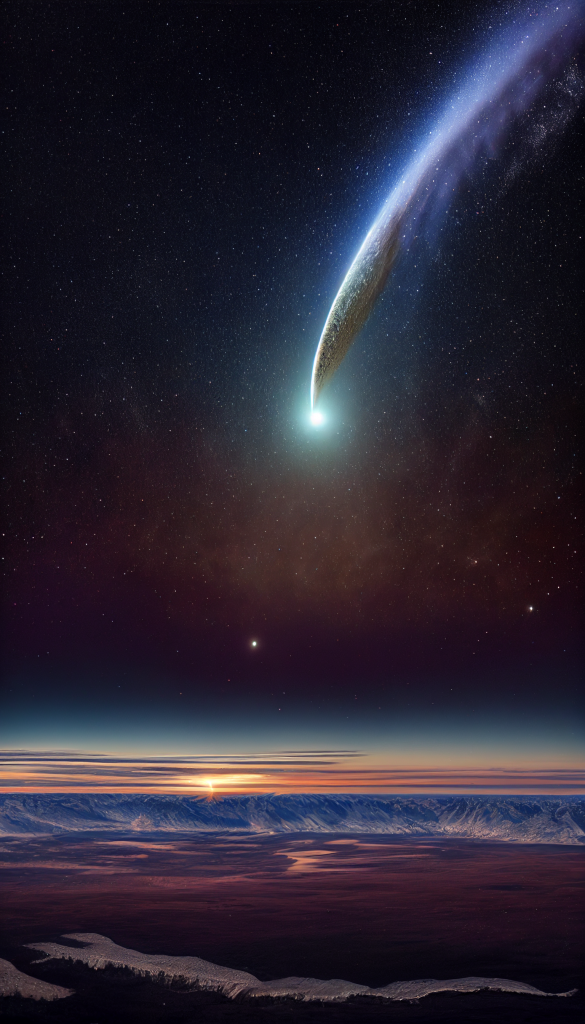

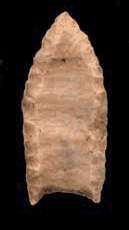
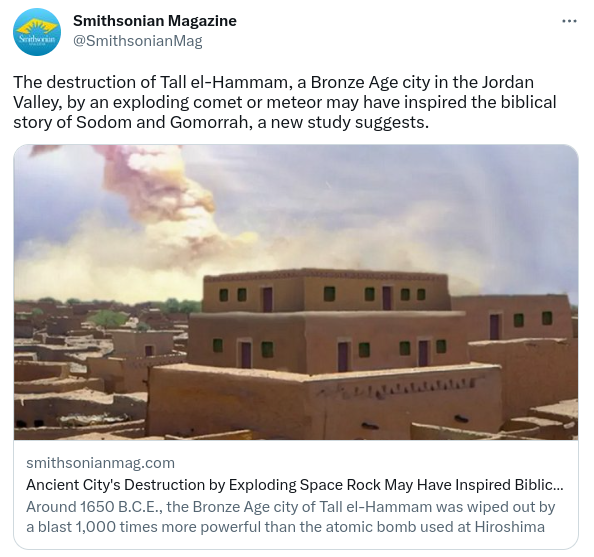
Thank you, Carl. I registered because your analysis of YD research is unbiased, entertaining, and addresses the content of the issue rather than a critique of anyone’s person. I look forward to learning more about your work.